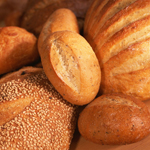Eating Too Much Fruit?
I don’t eat much processed food with added sugar, but I do enjoy eating a wide variety of fruit. Can eating a large amount of fruit be bad for my health?
Andrew Weil, M.D. | April 12, 2013

Yes, it can. Mother Nature clearly intended creatures of the earth to eat fruit. Fruit is delicious and appealing to animals so that they can help plants spread their seeds. Fruit offers quick energy in the form of sugar, as well as vitamins, minerals, fiber, antioxidant pigments, and other phytocompounds that reduce risks of disease.
The main problem with fruit these days is that so little of it available to us is any good. The varieties in commercial production are much less nutritious than ancestral ones. Much fruit is picked before it is ripe, which is favorable to shippers and distributors but not to consumers. Then there is the problem of agrichemical residues.
I try to get organic fruit. If I can’t, I peel fruit when possible or wash it in a weak soap-and-water solution to remove what’s on the surface. However, with some crops, such as strawberries, systemic pesticides are used that permeate the flesh of the fruit and cannot be washed off.
If you’re trying to lose weight, eating a lot of fruit can sabotage your efforts. While calorie counts are modest in many types of fresh fruit, they can skyrocket if you’re sipping a lot of fruit juice, making smoothies (which can add up to 300 calories or more) or consuming a lot of dried fruits, which are a source of concentrated sugar. People who eat a lot of fruit are often health and weight-conscious but can’t understand why they’re not losing pounds.
Eating too much fruit can also raise your serum triglycerides, which can increase cardiovascular risk. The high glycemic load of some forms of fruit can provoke insulin resistance and worsen metabolic syndrome. People with this problem are advised to eat only whole fruits and limit servings of dried fruits to one-quarter cup per day. If you eat canned fruits, choose water-packed products and drain them before serving.
Individuals with diabetes may have to be careful about the fruits they choose, how often they eat them and when they eat them. If you take a look at the glycemic index (GI), a measure of how fast carbohydrate foods (which include fruits) are converted in the body to blood glucose, you’ll see that there are big differences between fruits. I recommend choosing the ones that rank low on the GI scale. (Low rankings are those that score below 55; intermediate-GI foods score between 55 and 70, and high GI foods score above 70.) Good choices would include an average-sized apple (38), cherries (22), grapefruit (25), an average-sized orange (44), an average-sized pear (38), or a plum (39). Intermediate GI fruits include banana (55), cantaloupe (65), mango (55), papaya (58), and pineapple (66). High GI fruits include dried dates (103), and canned fruit cocktail (79). If you have diabetes, it is also important to pay attention to the size of the fruit you eat – choose a small or medium-sized apple over a large one (or eat only half of the large one). A quick and easy measure of the right serving size is the amount that can comfortably fit in the palm of your hand.
How much fruit should you eat? My anti-inflammatory diet pyramid calls for three to four daily servings of fresh, seasonal, or frozen fruit, organic whenever possible.
Andrew Weil, M.D.










